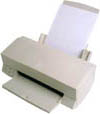The Absolute Phrase
Recognize an absolute phrase when you find one.
An absolute phrase combines a noun and a participle. Modifiers and/or objects may be present to complete the thought.
The phrase follows this pattern:
Noun + Participle + Optional Modifier(s) and/or Object(s)
Read these examples:
Legs quivering
Legs = noun; quivering = participle.
Her arms folded across her chest
Arms = noun; folded = participle; her, across her chest = modifiers.
Their fingers scraping the leftover frosting off the plates
Fingers = noun; scraping = participle; frosting = direct object; their, the, leftover, off the plates = modifiers.
An absolute phrase modifies the whole clause:
Legs quivering, our old dog Gizmo dreamed of chasing squirrels.
Legs quivering describes not only Gizmo but also his manner of sleep.
Her arms folded across her chest, Professor Hill warned the class about the penalties of plagiarism.
Her arms folded across her chest helps us picture both Professor Hill and the severity of her warning.
The family devoured Aunt Lenora's carrot cake, their fingers scraping the leftover frosting from the plates.
Their fingers scraping the leftover frosting from the plates lets us imagine this one family and the degree of their hunger.
©1997 - 2025 by
Robin L. Simmons
All Rights Reserved.
